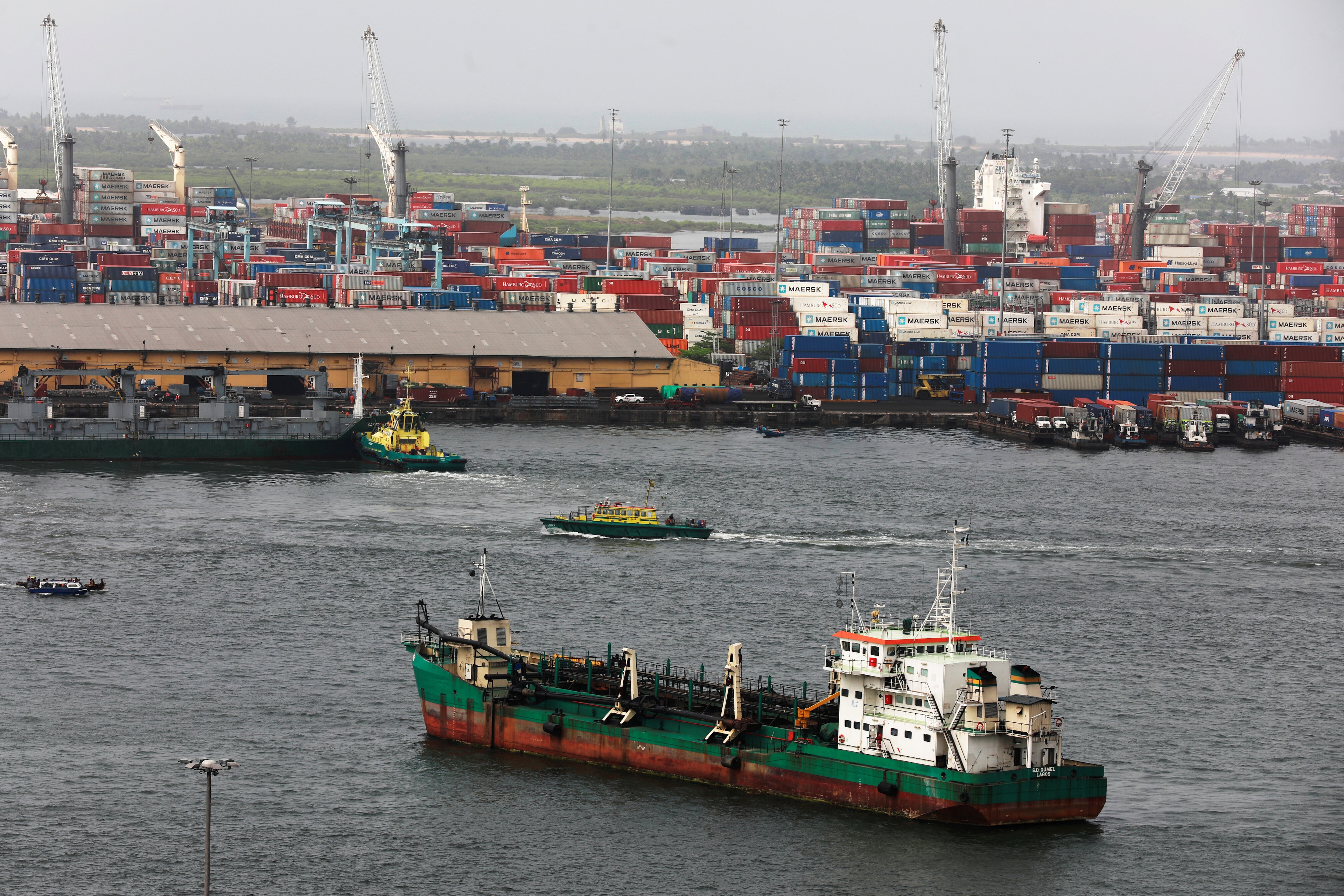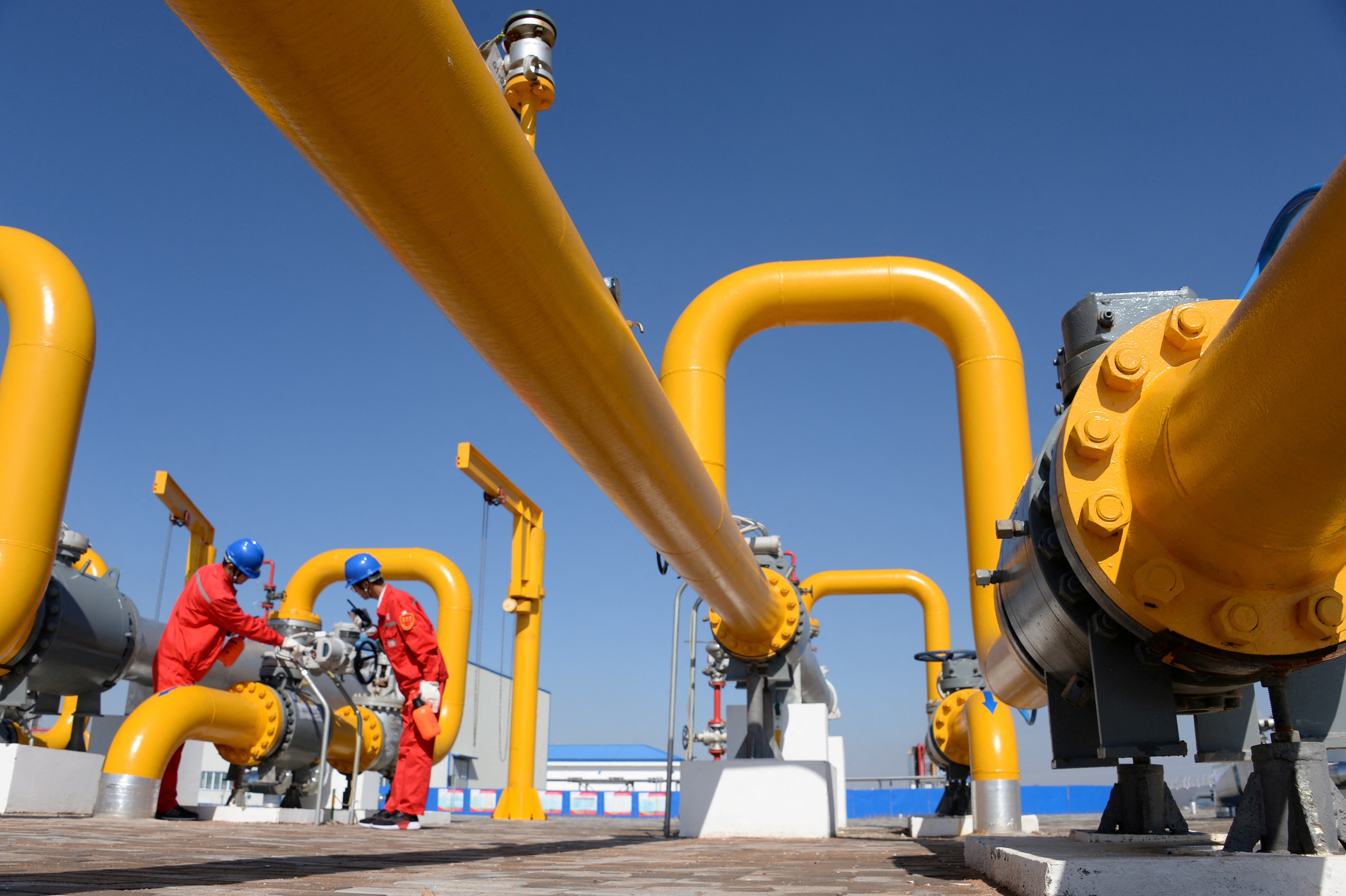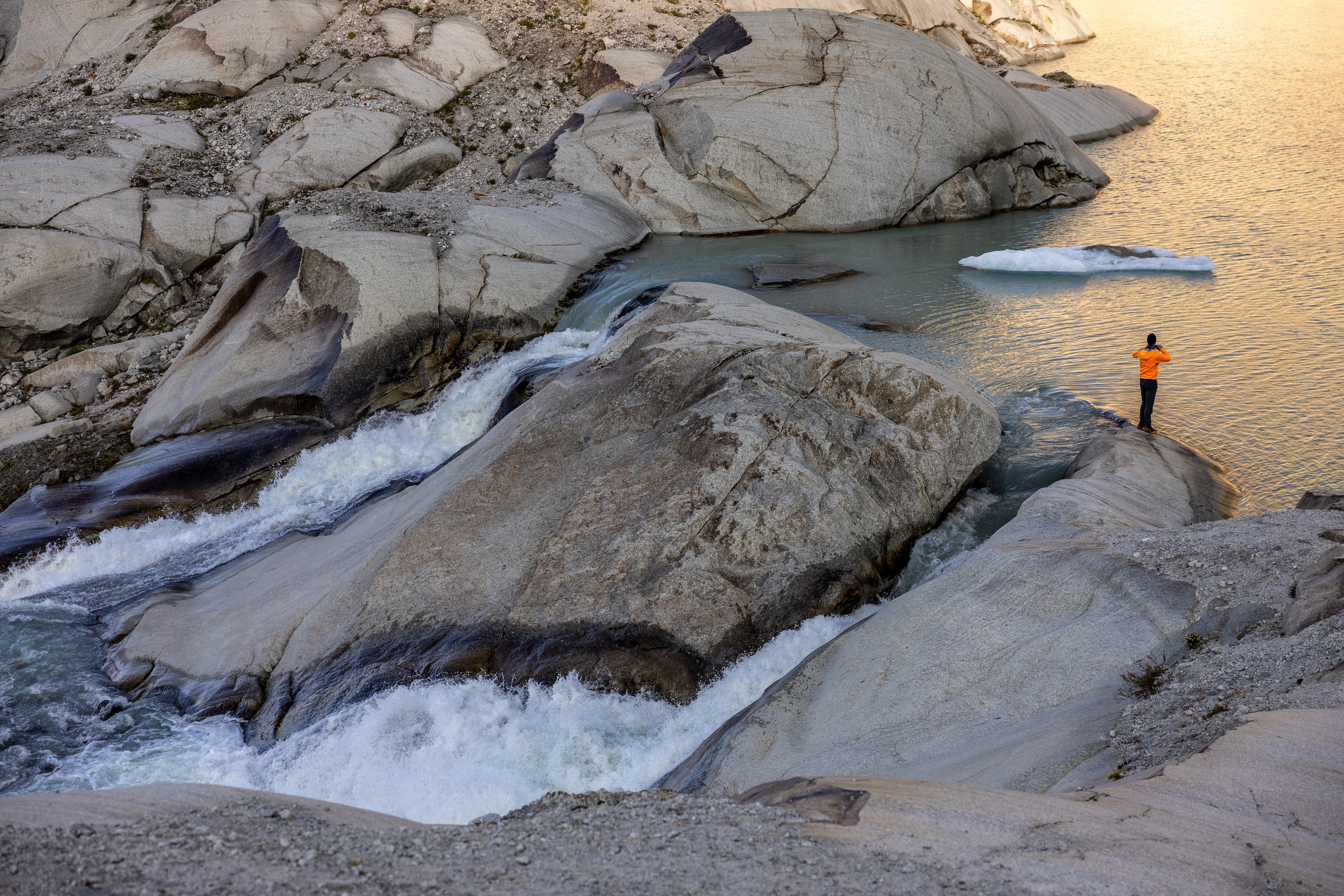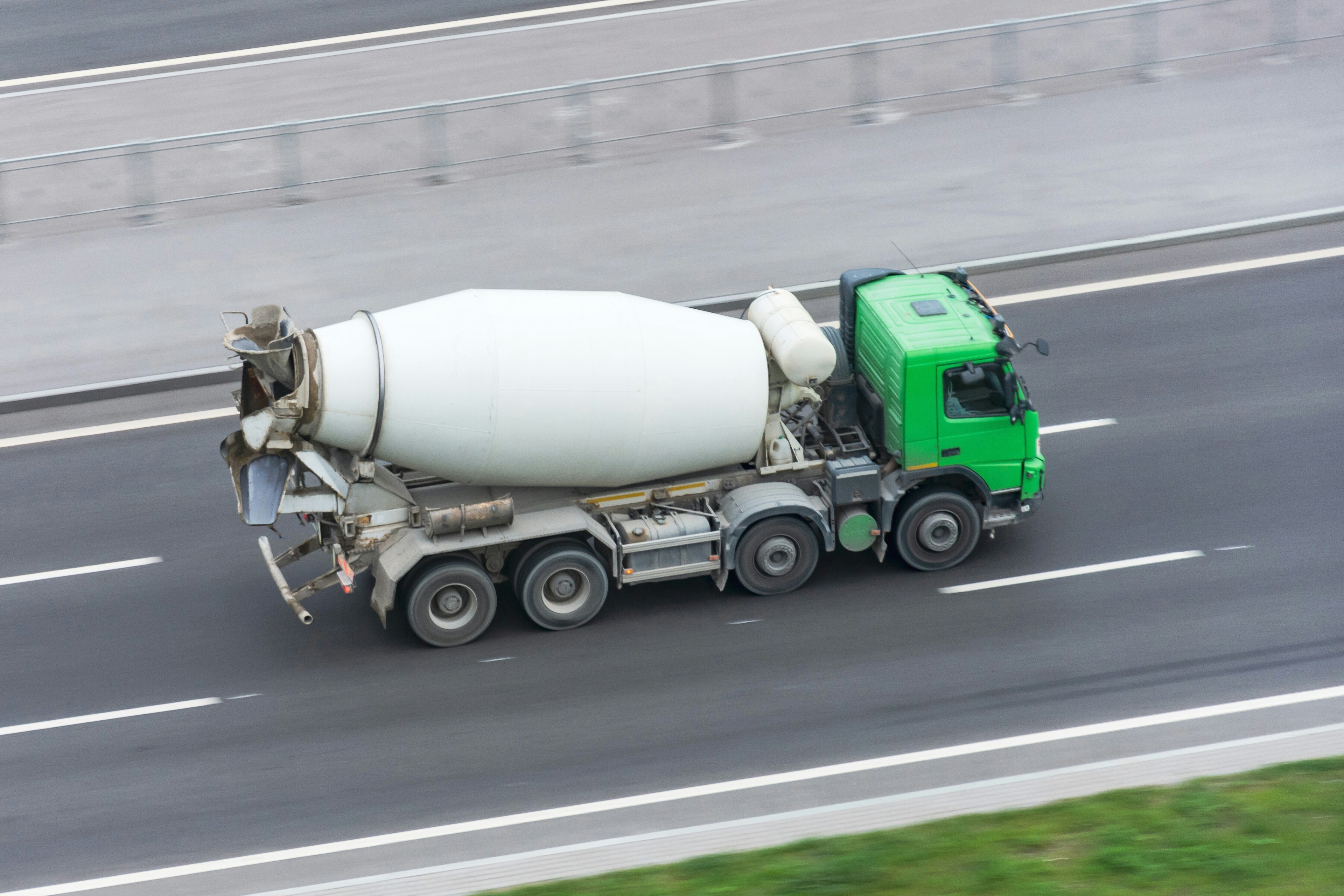Why a multi-fuel infrastructure network is key to transport and heavy industry’s energy transition

Embracing a multi-fuel involves requires resilient digital and physical infrastructure to enable production and distribution of new energy sources.
Image: Getty Images/iStockphoto
Stay up to date:
Transitioning Industrial Clusters
- The energy transition will be essential to decarbonizing heavy industry and transport, the world's two biggest polluting sectors.
- But embracing a multi-fuel future needs more than just new energy sources, it also needs resilient digital and physical infrastructure.
- Developing a networked infrastructure of port-anchored industrial clusters will be key for the transition of the energy and transport sectors.
The energy transition is key to ensuring the world’s biggest polluting sectors – heavy industry and transport – accelerate the adoption of green energy. However, embracing a multi-fuel future does not simply involve new energy sources; it also requires resilient digital and physical infrastructure to enable production and distribution of sustainable energy.
Transport by land, sea and air plays a key role in the global economy but remains reliant on polluting internal combustion engines (ICEs), making it a major contributor to climate change. The sector is currently responsible for about 30% of global carbon dioxide (CO2) emissions in developed countries and about 23% in regards to total man-made carbon emissions globally.
In order to reach net zero by 2050, as outlined in the Paris Agreement, carbon emissions from transport must drop by more than 3% each year to 2030, according to the International Energy Agency (IEA). But how do we get there?
Sustainable global trade relies on the transport ecosystem electrifying and adopting new fuels such as hydrogen, ammonia, methanol, biofuels and sustainable aviation fuels. However, the supply of these is going to require different distribution capabilities in vastly different locations to what is currently available in terms of heavy fuel-oil infrastructure.
So, whilst there are green cargo corridors emerging for trucking and shipping across the world, we need to take a more holistic and cohesive approach when it comes to developing these multi-modal environments, specifically regarding the policies and investment required for enabling digital and physical infrastructure, in order to reach net zero.
Simply put, it is not just about the fuels themselves but how we overcome the challenges of generating and making them available to the wider network too.
Green transition involves more than just fuels
Hydrogen, for example, is the most abundant element in the universe and both high in energy and low on pollution – making it a desirable greener fuel. But its production, emissions and storage vary between types and these, in turn, impact its sustainability.
Grey hydrogen is the most common, but is produced from natural gas through steam methane reforming, a process that emits significant amounts of CO2. Conversely, green hydrogen is the most sustainable as it is derived through the water electrolysis using renewable energy sources such as wind or solar, making it more expensive than conventional fuels.
In addition, hydrogen is also low density meaning that it needs specialized infrastructure, including transportation systems and storage facilities to ensure its safe and reliable delivery to fuelling stations – which also impacts the sustainability of its value chain.
Other more climate-friendly fuels face similar challenges. Green methanol can be produced from low-carbon sources, reduce CO2 emissions and be used as a feedstock as well as a transportation fuel. However, it is also expensive, flammable and needs double the fuel tank size to its oil equivalent.
Meanwhile, green ammonia can be produced using low-carbon hydrogen such as green hydrogen to combine with nitrogen, prompting growing interest in it as a sustainable fuel. Despite production costs still being comparatively high, it is also likely to be cheaper to store and transport than hydrogen – meaning ammonia could also be useful as a hydrogen carrier.
Biofuels also have their benefits and downsides. A type of renewable fuel derived from microbial, plant or animal materials, one of its major upsides is that it can be liquid, gaseous or solid – making it a good potential low-carbon solution for decarbonizing heavy-duty trucks, ships and aircraft in long-term. However, the IEA estimates that biofuel production needs an average growth of 11% a year on current levels to meet 2050 net zero targets.
And while liquefied natural gas, or LNG, is still a fossil fuel – albeit a cleaner one as it produces 40% less carbon than coal – it is already widely considered to be a key transition fuel thanks to its efficiency and high performance – contributing positively to transport emission reduction.
Accept our marketing cookies to access this content.
These cookies are currently disabled in your browser.
In addition to challenges posed by newer and green fuels, the electrification of transport and industrial processes also requires solutions when it comes to production, distribution and storage of electricity.
The IEA estimates that the share of electricity in total final energy consumption relating to transport will increase to 7.6% in 2030, up from 1.4% in 2022, under the net-zero-by-2050 scenario. Meanwhile the use of electricity in industry will rise from 22.6% to 29.9% over the same period. That’s a significant increase in demand for power.
Building future-fit infrastructure for green fuels
Reaching net zero will therefore require significant investment in not only research and development of clean fuels themselves, but also in the grid and infrastructure to enable and scale-up their distribution and use.
Ports – connecting land, sea and often also air transport – are gateways for both domestic and global trade, while port-anchored industrial clusters are multi-modal, multi-fuel ecosystems.
The latter are undergoing significant change with regards to the energy and transport transitions, and industrial transformation, as ports continue to expand their service offering. As such, port-anchored industrial clusters will be critical to establishing bunkering for zero-emission fuels.
Accept our marketing cookies to access this content.
These cookies are currently disabled in your browser.
At the same time, international demand for low-carbon and green fuels – along with electrification of industrial processes and transport – is growing fast. Hydrogen and ammonia volume moving through ports as cargo and as a fuel for trucks and marine bunkering, similarly has the potential to increase dramatically.
So as the heavy industry and transport sectors work towards meeting global emissions targets, this presents unique opportunities for port ecosystems and port-anchored industrial clusters, along with adjacent industries, to advance the trade and use of low-carbon fuels such as ammonia, accelerating these industrial clusters towards net zero.
Working towards a multi-fuel future
While there is still much more work to be done, there are already various efforts underway that are making good progress towards creating future-fit solutions for the green transition.
The Port of Antwerp-Bruges already has a range of greener fuels such as hydrogen, ammonia, methane and methanol available for bunkering, in addition to the range of bio- and conventional bunker fuels. It also has the capacity to store climate neutral fuels for use within its industrial cluster and distribution to the hinterland.
Recently, the world’s first large methanol-enabled container vessel, the Ane Maersk, completed its first bunker operation in European waters at the port, bunkering 4,300 tons of green methanol and 1,375 tons of biodiesel (B100) during its port stay – marking a significant milestone towards Antwerp-Bruges becoming a multi-fuel port.
The Maritime & Port of Singapore (MPA) is also working towards becoming a multi-fuel port and has issued expressions of interest for ammonia and methanol over the past year. The Singaporean government is also working with industry to support the digitalisation of bunkering supply chain documentation, as well as on methanol and ammonia bunkering.
And it’s not just shipping either. Trucking is the backbone of global trade – every single traded good has been transported by road at some point – so its charging infrastructure, especially where fast charging is needed, requires large grid connections and net capacity.
Swedish heavy vehicle manufacturer Scania has been working with the German federal government and industry partners on testing electrified road systems, where pantograph-equipped trucks can charge their batteries from catenary lines above while driving down stretches of highway.
An excellent lighthouse when it comes to working to holistically address transport digitalization and decarbonization is aviation. While sea and road transport are highly fragmented sectors, air transport is a relatively nascent industry that has largely developed in lock-step, meaning it has developed globally compatible infrastructure, standards and regulations, with a well-developed ‘network’ approach. Looking to the future, we should ask, what can we learn from that model?
Collaboration on networked infrastructure
As outlined above, developing a networked infrastructure – both digital and physical – of port-anchored industrial clusters will be essential for the transition of the energy and transport sectors.
Successfully achieving targets set by countries and companies alike will require truly collaborative efforts across stakeholders. As we rapidly hurtle towards net-zero deadlines, it will simply not be feasible to build bunkering, storage and distribution facilities for all these new fuels at each and every port and/or logistics hub.
Global and regional cohesion, complemented by increased transparency, collaboration and innovation will be essential to accelerate the scaling of multi-fuel supply networks serving sustainable, resilient trade.
What's the World Economic Forum doing about the transition to clean energy?
Governments and regulators need to be actively engaged. Current regulatory processes can mean that laying down refuelling capacity at port / airport terminals, or indeed for a grid solution landside, can take anywhere between six to 12 years. Ensuring regulatory compliance is accelerated, not negated, will be essential if we are to meet the ambitions set by countries and businesses.
Only by working together across transport and energy sectors and taking a cohesive approach to creating future-fit energy infrastructure, can we succeed in building global green network solutions for achieving net zero.
Don't miss any update on this topic
Create a free account and access your personalized content collection with our latest publications and analyses.
License and Republishing
World Economic Forum articles may be republished in accordance with the Creative Commons Attribution-NonCommercial-NoDerivatives 4.0 International Public License, and in accordance with our Terms of Use.
The views expressed in this article are those of the author alone and not the World Economic Forum.
Forum Stories newsletter
Bringing you weekly curated insights and analysis on the global issues that matter.
More on Energy TransitionSee all
Keith Svendsen
September 18, 2025
Stephanie Jamison
September 18, 2025
Roberto Bocca
September 17, 2025
Jennifer Schenker
September 16, 2025
Eneida Licaj and Genevieve Sherman
September 10, 2025
Thomas Kiessling
September 10, 2025






